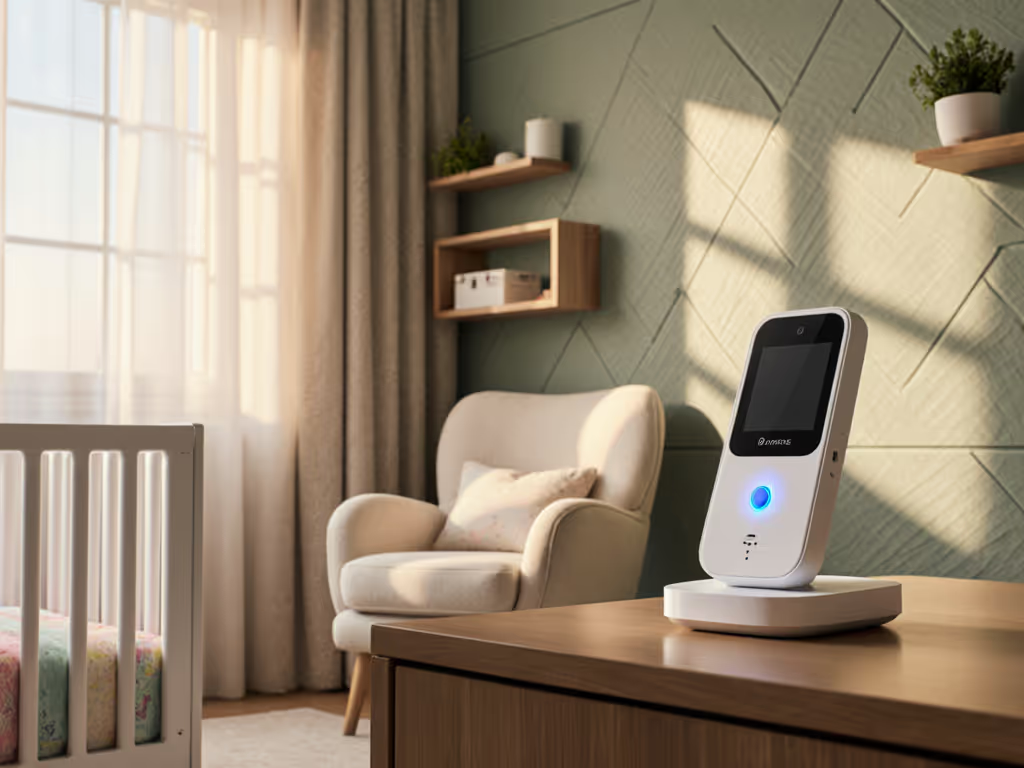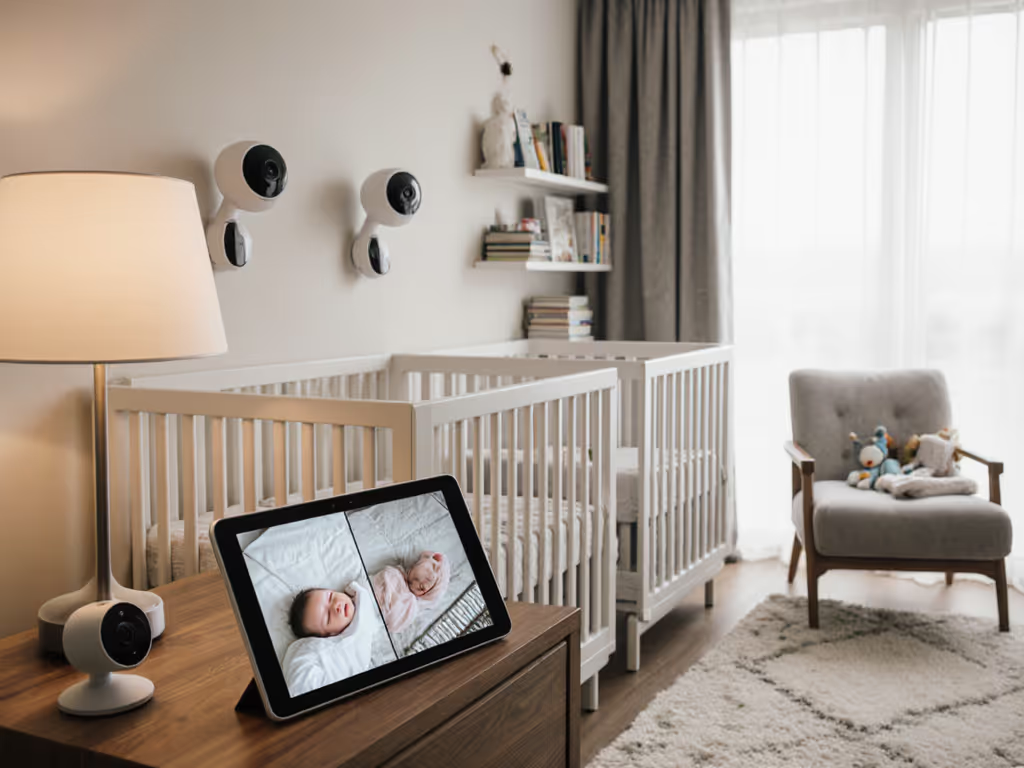
Role of Baby Monitors in Parenting Explained
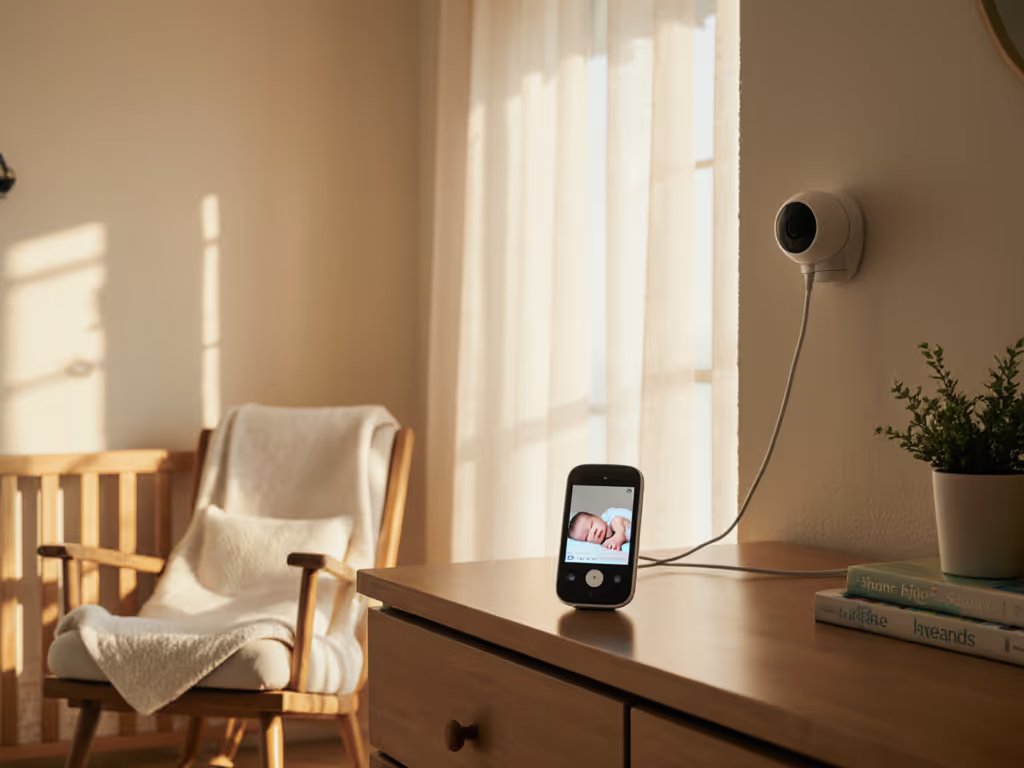
Over 90 percent of new parents rely on baby monitors to help keep an eye on their infants, but few realize just how advanced these devices have become. With features like vision-based algorithms and real-time breathing tracking, today's monitors do much more than send audio from the nursery. Understanding the evolving role and technology behind baby monitors can help parents make informed choices that fit their family's needs while offering genuine peace of mind.
Key Takeaways
| Point | Details |
|---|---|
| Evolution of Baby Monitors | Baby monitors have advanced from basic audio devices to high-tech systems that provide comprehensive monitoring of infant safety and development. |
| Understanding Limitations | Despite their advanced capabilities, they should not be relied upon as a sole solution for preventing conditions like SIDS, emphasizing the need for direct supervision. |
| Privacy Considerations | With digital monitoring comes the responsibility of ensuring robust security measures to protect sensitive data from potential cyber threats. |
| Choosing the Right Monitor | Parents should consider their unique environment and specific needs when selecting a baby monitor for optimal support and peace of mind. |
Defining the Role of Baby Monitors
Baby monitors have transformed from simple audio devices into sophisticated technological tools that help parents remotely track and understand their infant's environment and well-being. Electronic surveillance of infants has become a critical component of modern parenting, offering peace of mind and real-time insights into a child's safety and activities.
While many parents view baby monitors as a protective mechanism, research suggests their role is more nuanced than simple safety prevention. The American Academy of Pediatrics highlights that these devices should not be considered a definitive solution for preventing serious conditions like Sudden Infant Death Syndrome (SIDS). An editorial in The BMJ emphasizes that baby monitors might provide a false sense of security, underscoring the importance of understanding their actual capabilities and limitations.
Modern baby monitors have evolved to offer advanced features beyond basic audio and video monitoring. Recent technological innovations include:
- Vision-based algorithms that can detect non-nutritive sucking patterns
- Remote tracking of infant movement and breathing
- Temperature and environmental condition monitoring
- Two-way audio communication
- Night vision capabilities
Interestingly, emerging research is expanding the functional scope of baby monitors. A recent study introduced a sophisticated vision-based algorithm capable of non-contact detection of infant sucking signals, demonstrating how these devices are becoming powerful tools for understanding child development. These technological advancements suggest that baby monitors are transitioning from passive observation tools to active developmental monitoring systems that provide valuable insights into infant health and behavior.
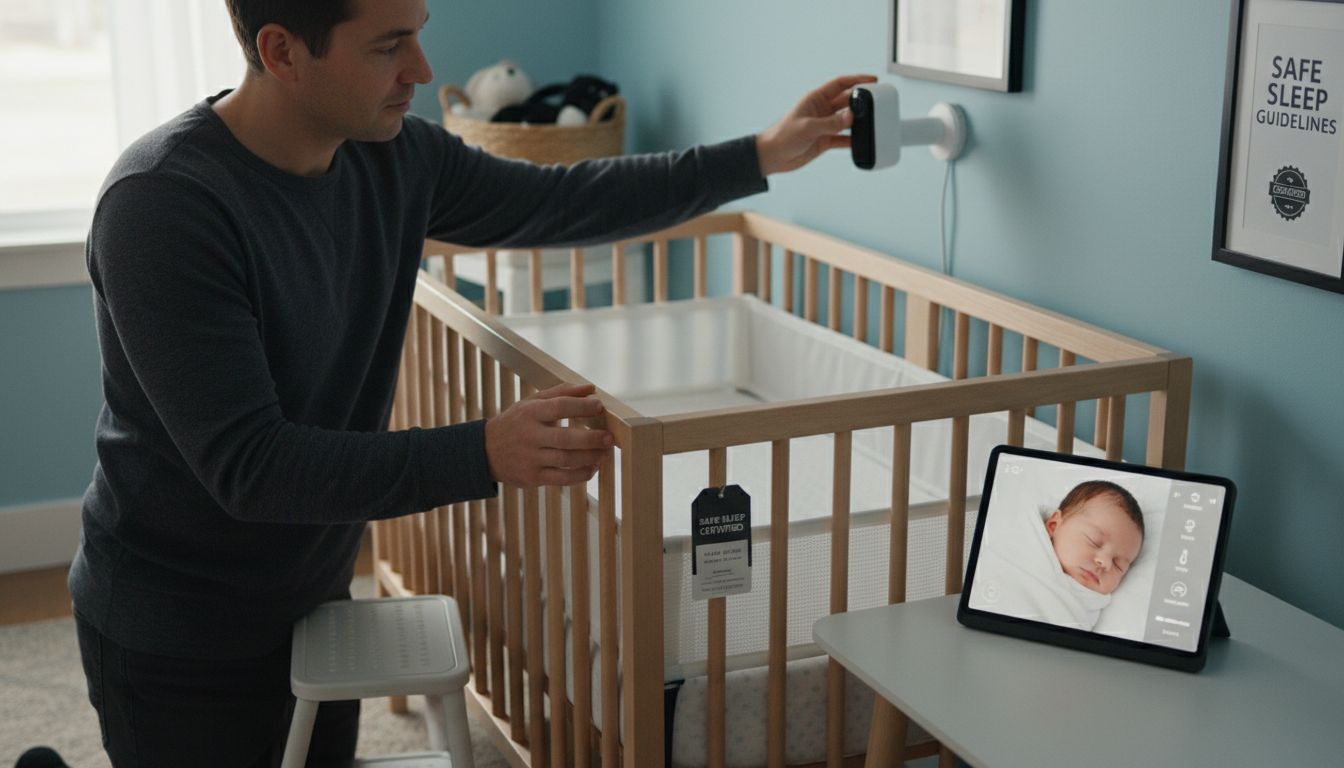
Ultimately, baby monitors serve as a supportive technology for parents, offering enhanced visibility and awareness. However, they should never replace direct parental supervision, regular check-ins, and established safe sleep practices recommended by pediatric experts. The most effective use of baby monitors comes from understanding their capabilities while maintaining realistic expectations about their role in child safety and care.
Types of Baby Monitors and Features
Baby monitors have rapidly evolved, offering parents a wide array of technological solutions to track and understand their infant's environment. Modern monitoring systems range from basic audio devices to sophisticated smart technology platforms that provide comprehensive insights into a child's well-being and development.
Parents can typically choose from three primary categories of baby monitors: audio monitors, video monitors, and smart network monitors. Audio monitors represent the most traditional option, providing sound transmission from the baby's room. Video monitors expand on this foundation by adding visual tracking, typically featuring infrared night vision and zoom capabilities. Smart network monitors represent the cutting edge, integrating advanced technologies like AI-powered sleep tracking, breathing motion monitoring, and seamless smart home system integration.
Here's a comparison of the three main types of baby monitors and their key features:
| Type of Monitor | Core Features | Pros | Cons |
|---|---|---|---|
| Audio Monitor | Sound transmission<br>Basic alerts | Simple to use<br>Budget-friendly | Limited info<br>No visual check |
| Video Monitor | Audio & video<br>Night vision<br>Remote camera control | Visual confirmation<br>Enhanced safety | Higher cost<br>Requires setup |
| Smart Network Monitor | HD video<br>AI-powered tracking<br>App integration<br>Environmental sensors | Remote access<br>Advanced alerts<br>Smart features | Privacy risks<br>More expensive |
Key features that differentiate contemporary baby monitors include:
- High-definition video resolution
- Two-way audio communication
- Temperature and environmental sensors
- Encrypted wireless transmission
- Remote pan/tilt/zoom camera controls
- Smartphone app integration
- Motion and sound detection alerts
- Extended battery life and charging options
Specifically, parents must consider critical factors when selecting a baby monitor. WiFi-enabled monitors offer extensive remote monitoring capabilities but raise potential privacy concerns. Non-WiFi video monitors provide more localized, secure communication channels. Some advanced models now incorporate AI-driven algorithms that can track infant breathing patterns, movement, and even predict potential sleep disruptions.
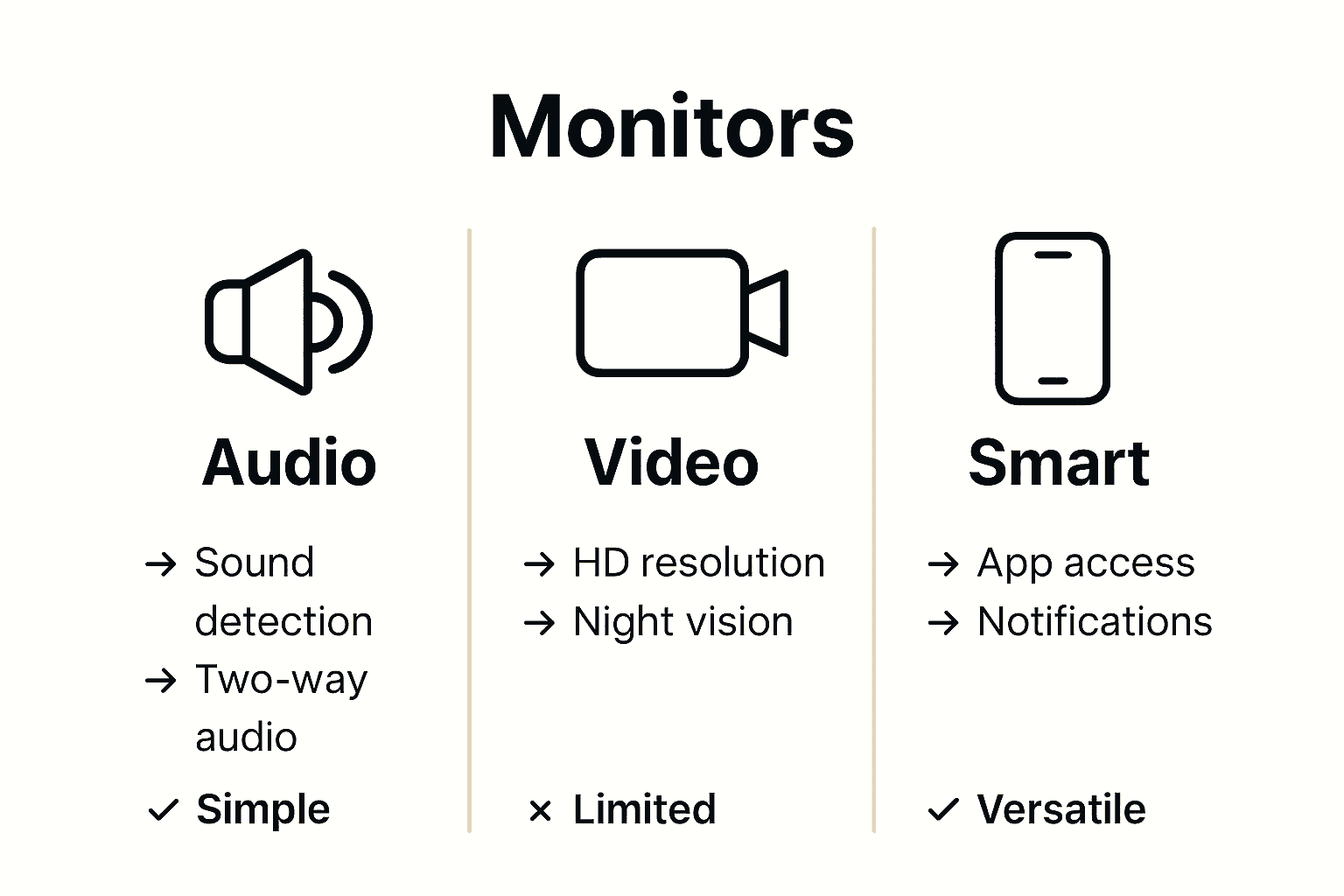
Ultimately, the ideal baby monitor depends on individual family needs, home layout, and personal technological comfort levels. While features continue to expand, the core purpose remains consistent: providing parents with reliable, real-time insights into their child's safety and well-being. Careful research and understanding of each monitor's specific capabilities will help parents make the most informed decision.
How Baby Monitors Support Parenting
Parental support through technology has transformed dramatically with the evolution of baby monitors, offering unprecedented insights into infant care and development. These sophisticated devices have become more than simple surveillance tools, emerging as comprehensive parenting assistants that provide real-time information, emotional reassurance, and developmental tracking capabilities.
Baby monitors serve multiple critical functions in supporting modern parenting strategies. They enable remote monitoring that allows parents to maintain visual and auditory awareness of their infant while managing household tasks or working. Advanced systems now incorporate complex features like infant engagement tracking, which helps parents understand their child's social and linguistic developmental patterns. Recent research from academic studies demonstrates how these technologies can assess infant responsiveness and interaction potential, providing parents with nuanced developmental insights.
Key ways baby monitors support parenting include:
- Reducing anxiety about infant safety
- Providing continuous health and movement tracking
- Enabling quick response to infant needs
- Supporting early detection of potential developmental concerns
- Facilitating remote parental supervision
- Offering peace of mind during sleep transitions
Cutting-edge research is expanding the supportive potential of baby monitors. Innovative computer vision techniques now allow non-invasive monitoring of infant behaviors like non-nutritive sucking, which can provide valuable indicators of neurological and motor development. These technological advancements transform baby monitors from passive observation tools into active developmental assessment platforms that offer parents deeper understanding of their child's growth and well-being.
Ultimately, baby monitors represent a powerful intersection of parental care and technological innovation. While they cannot replace direct parental interaction, these devices provide critical support by offering enhanced visibility, real-time information, and developmental insights. The most effective approach involves using these tools as complementary resources that augment, rather than substitute, attentive and responsive parenting.
Privacy and Security Concerns Explained
Digital surveillance of infants through baby monitors introduces complex privacy and security challenges that modern parents must carefully navigate. While these technological tools offer unprecedented insights into child care, they simultaneously raise significant questions about data protection, potential vulnerabilities, and the long-term implications of continuous monitoring.
WiFi-enabled baby monitors represent the most significant privacy risk, as they transmit sensitive visual and audio data through home networks. Cybersecurity experts warn that unsecured monitors can potentially be hacked, allowing unauthorized individuals to access live video feeds of private family spaces. This risk is amplified by manufacturers who may not prioritize robust encryption protocols or regular security updates, leaving potential backdoors for malicious digital intrusion.
Key privacy and security considerations for baby monitors include:
- Ensuring strong password protection
- Selecting monitors with end-to-end encryption
- Regularly updating firmware and software
- Disabling remote access when not necessary
- Using two-factor authentication
- Checking manufacturer's data storage and sharing policies
- Positioning cameras to minimize unintended surveillance areas
- Using local-only transmission modes when possible
Parents must also consider the broader ethical implications of constant infant monitoring. Digital footprints created by these devices can potentially be stored, analyzed, or inadvertently shared by manufacturers. Some advanced monitors collect extensive data about infant behaviors, raising questions about data ownership, potential future use, and the long-term privacy rights of children who cannot provide informed consent for such monitoring.
Ultimately, responsible use of baby monitors requires a balanced approach that weighs technological convenience against privacy protection. Parents should view these devices as tools to supplement, not replace, direct care and supervision. Carefully researching device specifications, understanding potential vulnerabilities, and maintaining active digital hygiene can help mitigate risks and ensure that baby monitors remain a supportive technology rather than a potential privacy liability.
Choosing the Right Monitor for Your Family
Selecting the perfect baby monitor is a nuanced decision that extends far beyond simply picking the most expensive or feature-rich device. Each family's unique home environment, lifestyle, and specific parenting needs play a crucial role in determining the most appropriate monitoring solution for their individual circumstances.
The selection process requires careful consideration of several critical factors. Home layout significantly influences monitor performance, with larger homes or multi-story residences demanding longer range and more robust signal transmission. Parents must assess their specific living space, considering potential interference from walls, electronic devices, and structural elements that might impact monitor connectivity and reliability.
Key considerations when choosing a baby monitor include:
- Range and signal strength for your home
- Battery life and charging convenience
- Video quality and night vision capabilities
- Audio clarity and sensitivity
- Smart home integration potential
- Encryption and privacy features
- Budget constraints
- Ease of use and interface design
- Compatibility with existing technology
- Expandability for future children
Parental anxiety levels and personal comfort with technology also play substantial roles in monitor selection. Some parents prefer simple, straightforward audio monitors, while others feel more secure with advanced video systems featuring movement tracking, breathing monitoring, and smartphone integration. Understanding your personal monitoring preferences and technological comfort zone is just as important as evaluating technical specifications.
Ultimately, the ideal baby monitor is a personalized tool that aligns with your family's specific needs. No single monitor works perfectly for every household, making thorough research and thoughtful evaluation essential. By systematically assessing your home environment, technological preferences, and monitoring requirements, you can select a device that provides genuine peace of mind and practical support throughout your parenting journey.
Find the Baby Monitor That Truly Supports Your Parenting Journey
Understanding the complex role baby monitors play in modern parenting—offering safety insights, developmental tracking, and peace of mind while navigating privacy concerns—is essential for every caregiver. If you want to ensure your baby monitor is more than just a device but a trusted ally tailored to your unique home layout and needs, it is critical to choose wisely. Many parents struggle with confusing features, security risks, and technology they cannot fully trust when their child’s well-being is at stake.
At Baby Monitors For Parents, we specialize in guiding you through these challenges with expert advice and evidence-based reviews. Whether you want to compare popular models like the Miku Pro 2 or Nanit Pro or need practical tips to secure your device, our detailed guides cover everything from privacy-focused recommendations to setup strategies that enhance your confidence and your child’s safety. Don’t let uncertainty slow you down. Get the personalized insights you need now by visiting our main landing page and explore our comprehensive resources to make the most informed and secure baby monitor choice today.
Frequently Asked Questions
What are the main types of baby monitors available?
The three primary types of baby monitors are audio monitors, video monitors, and smart network monitors. Audio monitors provide sound transmission, video monitors add visual tracking, and smart network monitors include advanced features like AI-powered tracking and app integration.
How can baby monitors support parenting?
Baby monitors support parenting by enabling remote monitoring, providing continuous health tracking, reducing anxiety about infant safety, and facilitating quick responses to a child's needs. They also aid in detecting potential developmental concerns early on.
What privacy and security concerns should I consider when using a baby monitor?
When using a baby monitor, ensure it has strong password protection, end-to-end encryption, and regularly updated firmware. Be mindful of potential unauthorized access and consider disabling remote access when it's not necessary.
How do I choose the right baby monitor for my family?
Choosing the right baby monitor involves considering factors such as your home layout, range and signal strength, video and audio quality, battery life, smart home integration, and your personal comfort level with technology. Assess your specific needs to find the ideal fit.

